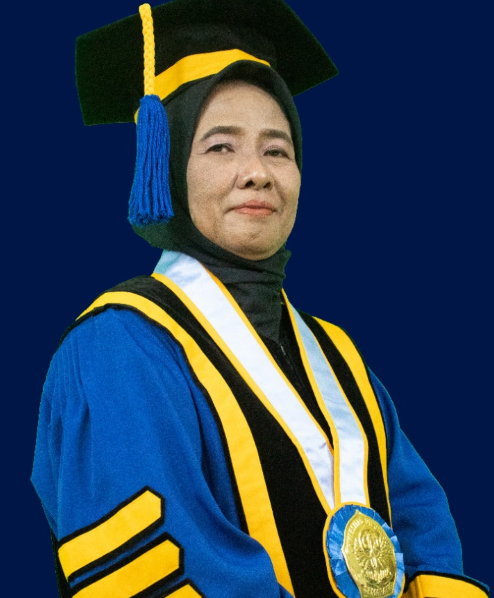
fsm.undip.ac.id As a tropical country with abundant medicinal plant biodiversity, Indonesia has extraordinary herbal raw materials. This makes the Indonesian people from generation to generation accustomed to consuming herbal medicine. However, the fact is that herbal medicine still lacks scientific evidence, in contrast to herbs whose use has a scientific basis.
“Herbs are natural ingredients whose preparations are still in their original form, such as leaves, rhizomes, stems, and others. The efficacy and safety of new herbs are based on hereditary experience, while herbs already have a scientific support base,” said Prof Dr. Dra Meiny Suzery MS in his first oration as a professor in the field of organic chemistry of natural ingredients, at the Open Meeting of the Academic Senate of Diponegoro University (UNDIP) , Tuesday (25/52021).
Through a scientific speech entitled “Herbal-Based Chemistry Development Model for Public Health“, Meiny, who has been pursuing a career as a lecturer and researcher at the Faculty of Science and Mathematics (FSM) Undip since 1989, is the Professor who entered to Diponegoro University in 1989 conveyed the need to develop herbal medicine into herbal medicine. This needs to be done so that we can be able to compete in the global market.
“The last ten years have seen substantial growth in the global market for herbal and herbal products. Unfortunately, even though Indonesia is rich in biodiversity, we are still a net importer of herbal products. herbal imports increased by 4% from 2019 to 2020. This shows that Indonesia is not developing significantly,” said the wife of Dr Bambang Bambang Cahyono MS who completed his bachelor’s degree at Andalas University, master’s degree at Bandung Institute of Technology and doctorate at Diponegoro University.
As a researcher who is concerned with the chemistry of natural ingredients, this mother of four hopes that through herbal development, the Indonesian herbal industry will be able to compete at a global level because various parts of plants have been widely used in Indonesia. He gave examples of roots (vetiver), stems (pasak bumi), bark (cinnamon, stir-fried cat), rhizomes (temulawak, ginger, turmeric, flowers (rosella), fruit (mangosteen), as well as those that use whole plants such as purwoceng.
However, a woman born in Padang, May 10, 1960, sees that the development of herbal medicines in Indonesia is more directed at the direct use of simplicia or plant extracts to patients. This pattern of development is difficult to accept because the quality, quantity, safety and efficiency of natural medicines have not been fully guaranteed.
Therefore, a more scientific and accountable approach or model is needed. That’s why I developed a model to get active compounds from herbs,” added the Professor, who teaches courses in Organic Chemistry of Natural Phytochemicals, Traditional Medicinal Chemistry, and Research Design and Scientific Writing.
Given the importance of the results of the research conducted by Prof. Meiny, many herbal and herbal industry laboratories provide support by opening the use of large-scale laboratories owned by these companies for their research. In Central Java, there are indeed many large-scale herbal and herbal industries, and they are very interested in the products of the research results of professors who come to Semarang because they are brought by their hearts.
In detail, the models developed include the use of Hyptis pectinata to take the source of the chemical compounds. This plant was chosen because it grows a lot in Indonesia, which has a tropical climate, so it is easy to collect. The development model for the extraction and isolation of compounds Hyptolids in Hyptis pectinata poit is extraction, separation, purification and determination of molecular structure. The result is the isolation of the pure compound in the form of a needle as much as 1.7%. This can be used as a secondary standard in determining the amount of bioactive compounds in determining a very crucial stage in the development of traditional medicines, while pure compounds are the basis for the development of modern medicines derived from natural herbal ingredients.
The whole process is important to see as an effort to improve the quality of herbs that have known activities. From the research, it is known that the compound hiptolide which is the major component of the plant Hyptis pectinata is suspected to have anticancer function, because it binds to a lactone ring which is known to bind proteins.
The starting point for developing this model is an organic molecule isolated from a material that is highly responsible for biological activity. By looking at the types of functional groups of organic molecules and their interactions with other groups on the target receptor, their molecular size and stereochemistry; the use of these herbal ingredients is predictable.
Science to produce new compounds should be viewed as one of the efforts to improve the quality of herbs that have known activity. This model of developing herbal-based chemistry needs to be continued and is expected to be used as a reference for developing herbal medicines in Indonesia. (SPA)

